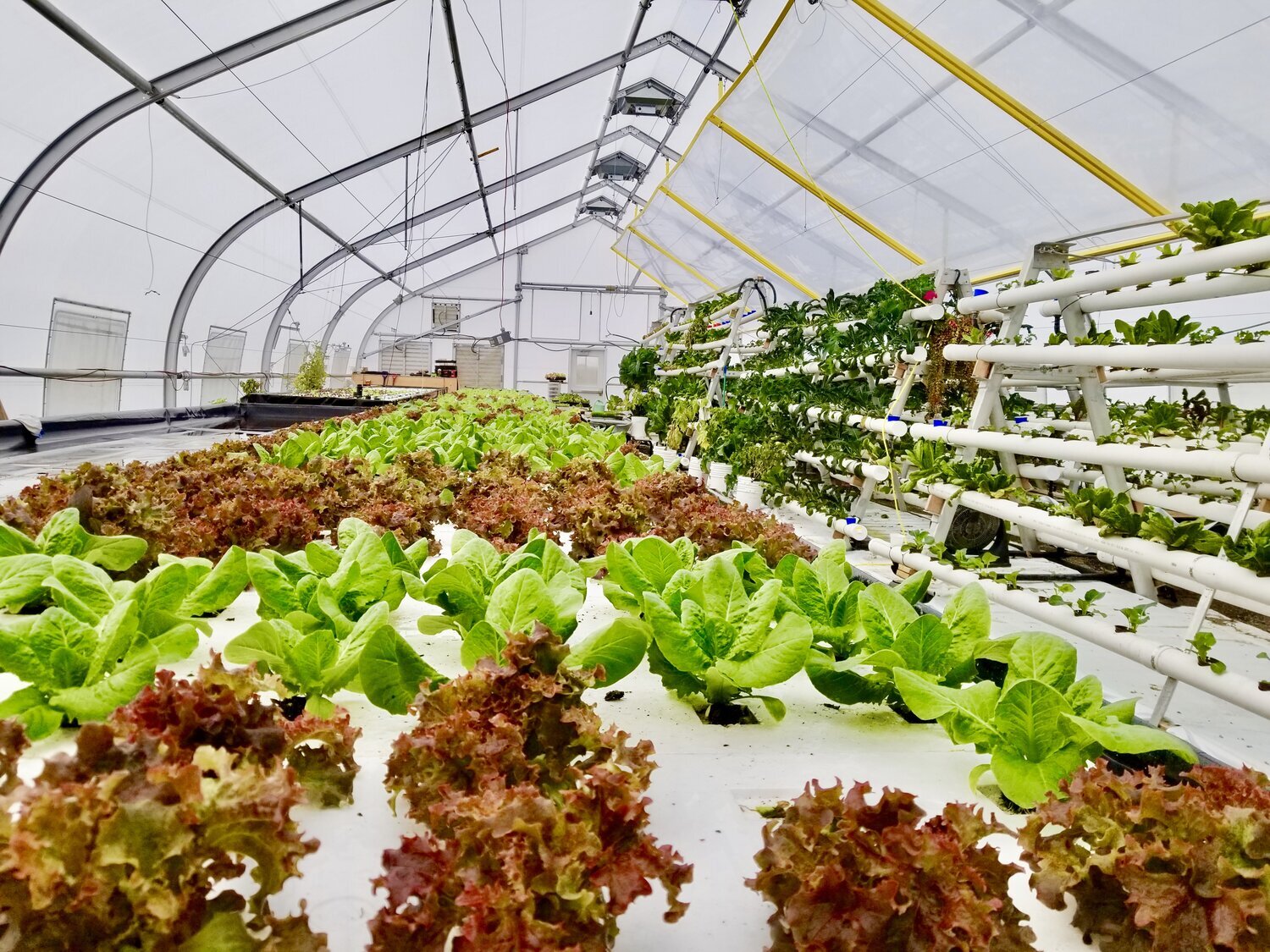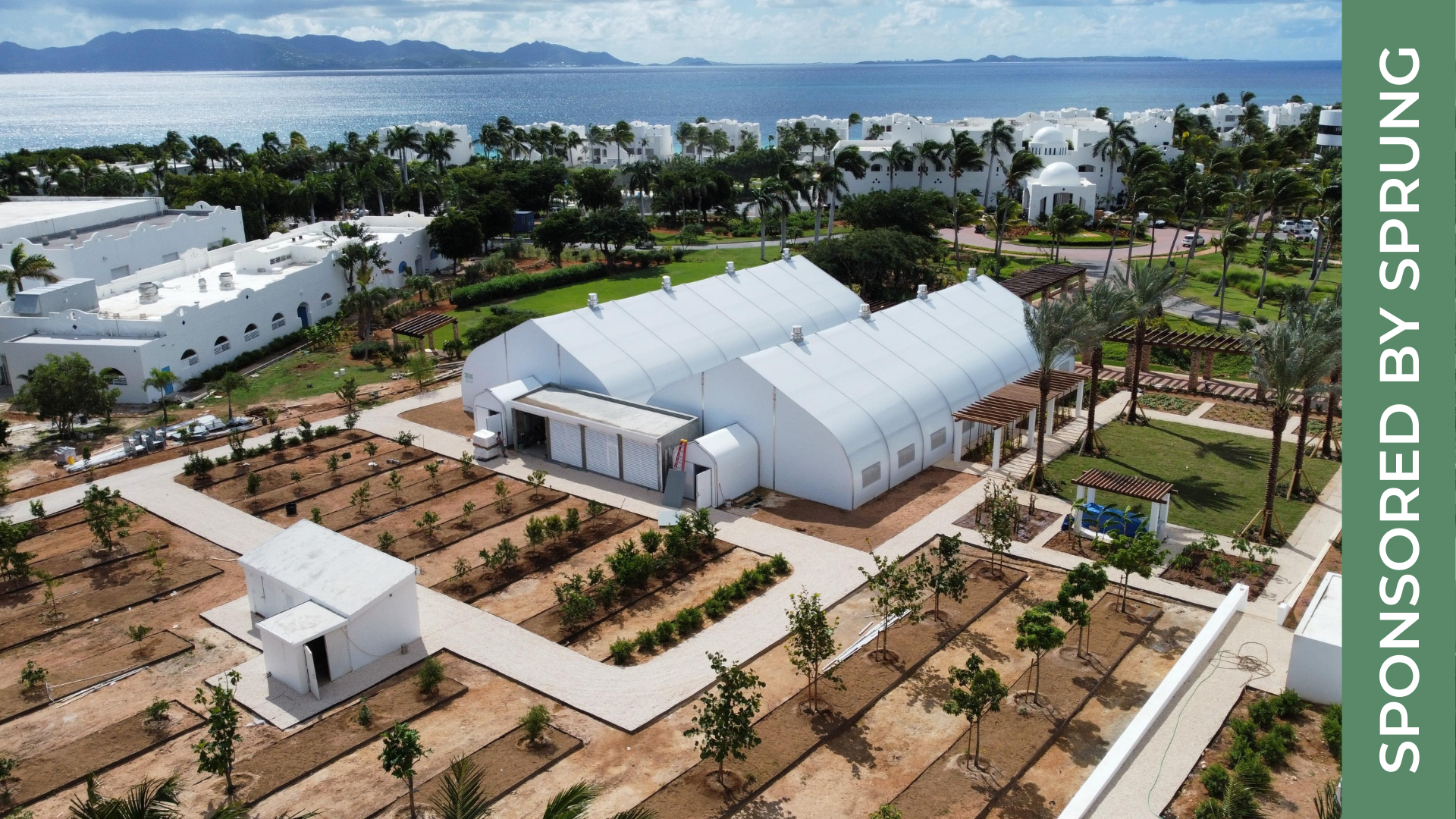Oct 4, 2021
These Hurricane-Resistant Greenhouses Are Making Island Nations More Self-Sufficient
Editor’s Note: This is the second post of a two-part series in partnership with Sprung Structures. Read the first post on building greenhouses in some of the world’s most extreme climates.
How much do you know about island nations?
Did you know that there are almost 50 island nations globally? Or that their main supply of food is fish? Or that they’re heavily reliant on expensive imports from continental nations?
In being naturally isolated by bodies of water, several of these nations face severe food insecurity challenges.
With high shipping costs and generally small economies, these countries are increasingly challenged to feed their growing populations. Indonesia, for instance, ranked 70 out of 117 countries in the 2019 Global Hunger Index. And, according to the National Institute of Population and Social Security Research, at least 15–17% of Japan’s population can be considered food insecure.
But climate change is making this challenge even worse

Image sourced from Sprung Structures
Ralph D. Birkhoff, Sprung’s Caribbean Region Representative & Chief Commercial Officer (CCO) of Island Growers, LLC, adds that “the Caribbean region, like many sub-tropical latitudes around the world, are subject to constantly increasing climate-related threats to crop production. These include droughts, flooding, and cyclonic wind events like hurricanes and typhoons.”
With food being the sustenance for life, climate change is taking a serious toll on the food production capabilities and health conditions of inhabitants of these remote lands.
The reliance on food imports in these disaster-prone regions are delicate to supply chain issues as one in six people in the world rely on food imports. The total food imports for the Caribbean and Latin America regions were put at over USD 67 billion in 2018 Food Export Insights. More than US$6 billion is spent on the annual food import bill by the Caribbean region alone, which has a combined population of 44.4 million people.
With this ever-growing list of concerns, how can island countries become more food secure? Shouldn’t agricultural independence and food security be the reality of every individual, regardless of location?
Sprung Structures could represent one solution.
Sprung is taking these food-related challenges head-on with their customizable greenhouses.
Their team shares that “through decades of invention, design and continued innovation, Sprung structures consistently outperform when it comes to rapid construction capabilities, total design flexibility, energy efficiency, durability, and lower overall project costs.”
With a performance architectural membrane designed to provide maximum longevity and color fastness, and performance insulation that offers all-weather durability and cost-saving energy efficiency, these greenhouses can withstand snow, hail, hurricanes, and earthquakes. And, as a result, they provided increased resilience for these island nations to produce their own food in the face of climate change and high shipping costs.
According to the Sprung team, their “greenhouses are fully customizable and can be packaged up and shipped anywhere in the world with over 12,000 structures in 110 countries. The clear span design allows for an uninterrupted interior for ultimate growing conditions.” Alongside being “relocatable and lightweight, Sprung is engineered for extreme weather events; wind, snow, fire, seismic, and other requirements related to the building code.”
In relation to the agricultural hardships that locals of island nations face, the Sprung team adds that “these greenhouses provide food security through Sprung’s innovative technology to move nations toward a more self-sustainable environment. Recent demand for our greenhouses has increased as supply disruptions throughout the pandemic have made organizations realize the vulnerability of these island nations.”

Image sourced from Sprung Structures
Achieving rapid greenhouse scalability in Trinidad & Tobago
With these fully customizable and hurricane-resilient greenhouses, Trinidad & Tobago will soon be home to the Caribbean’s largest source of locally-grown fresh organic berries.
Considering the unique climatic conditions of this island nation, Sprung’s representative in Trinidad & Tobago shares that “a 12-acre climate-smart hydroponic greenhouse farm located on Cove Estate in Tobago,” specializing “in fresh organic berries and greens for local consumption,” will provide “a unique opportunity for the commercial production of ‘cold weather’ crops in a Category 5 hurricane resistant tropical setting, with major implications for food security, climate resilience and import substitution.”
By combining “advanced AgTech and climate-smart protected agriculture,” Sprung is able to provide “a solution for the climate-related barriers” of Trinidad & Tobago, so they’re able “to grow a variety of organic crops in harsh tropical environments plagued by climate change impacts.”
With an initial investment for the construction of a 42,000 square foot greenhouse farm in Tobago, this farm will soon be able to produce over 22 tons of fresh berries per month as well as fresh organic greens once it is in full operation.
The team is currently exploring opportunities to “increase production levels and introduce a freezing and packaging component for frozen berry exports across the region,” alongside replicating “the project across the region, with enormous potential to enhance the food security of environmentally vulnerable Small Island Developing States.”
What’s our takeaway?
Climate change is a global concern, but island nations are particularly vulnerable to the less predictable and more volatile climatic conditions. We need to move rapidly to empower these populations to be both resilient and self-sufficient with their food production.
Sprung Structures’ greenhouses are enabling these islands to do exactly that. By removing high shipping costs and changing climates from the equation, Sprung is helping these naturally isolated islands to produce their own food.


